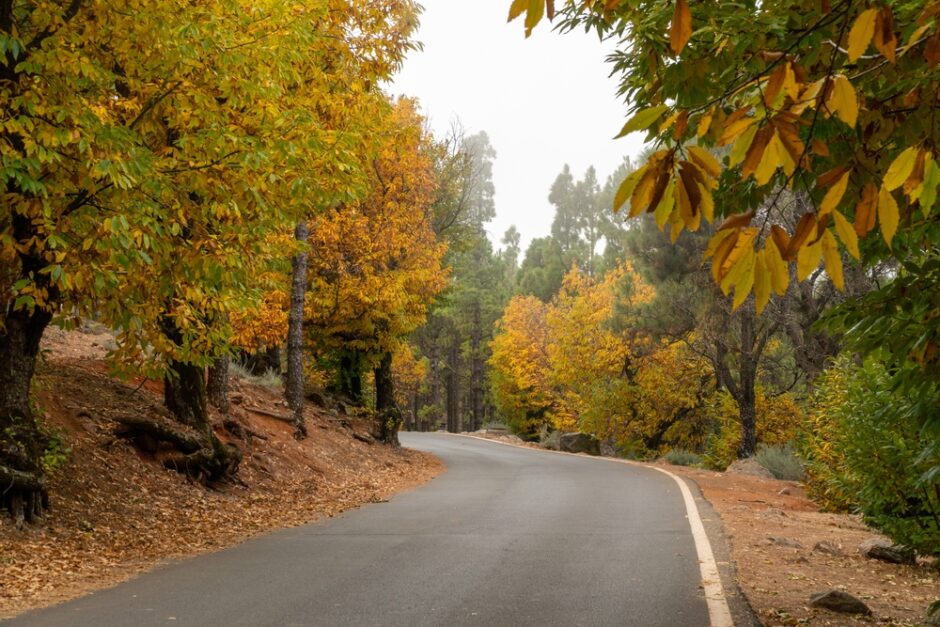Sweet Chestnut or Spanish Chestnut
Latin Name : Castanea sativa

A very large tree up to 30 metres plus tall. Historically coppiced and used to make very durable fence posts and arris rails on site in the forest. Known also for producing sweet chestnuts – much loved when roasted at an outside winter event.
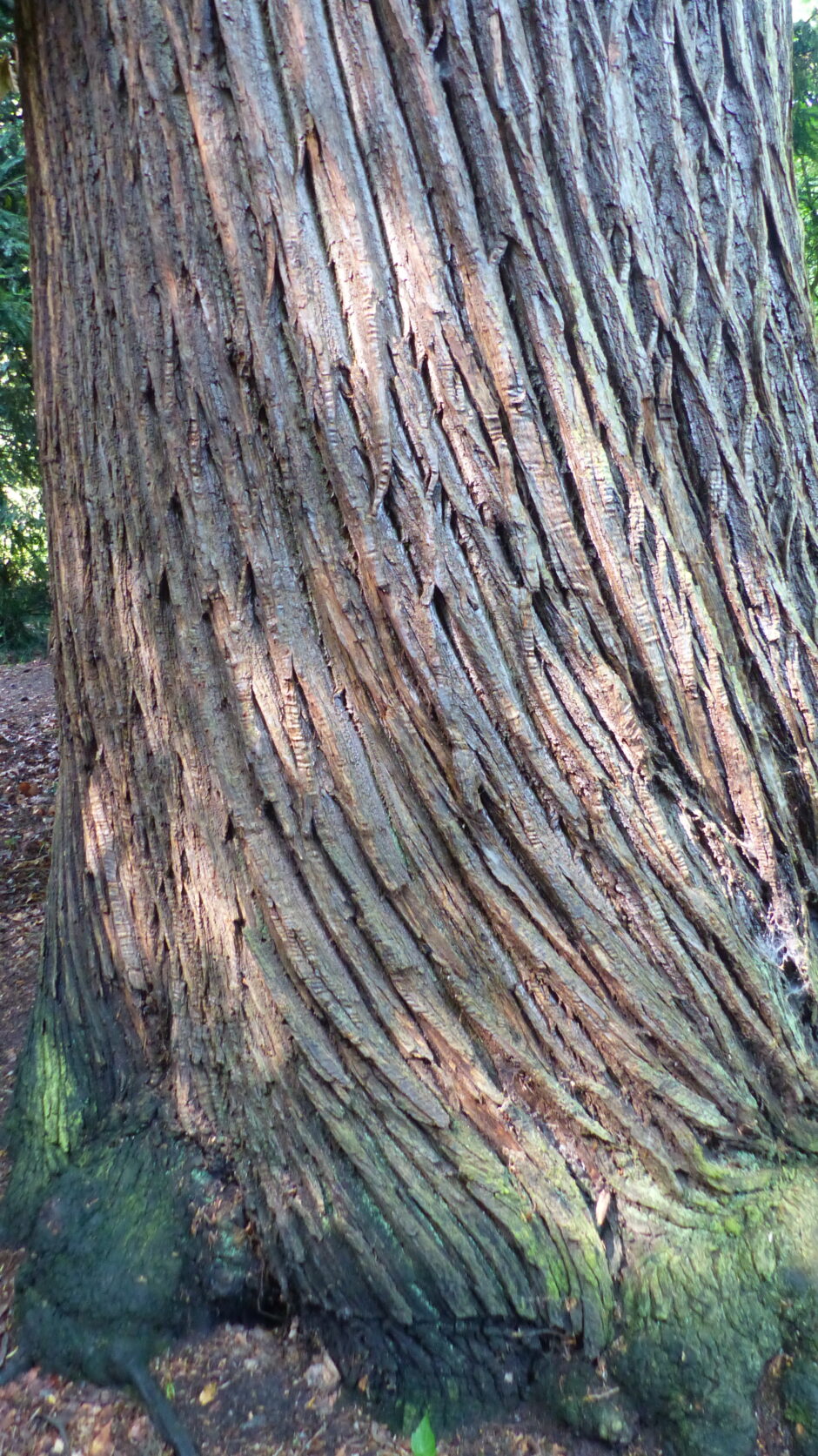
Mature trees typically exhibit a strong spiral pattern in their bark.
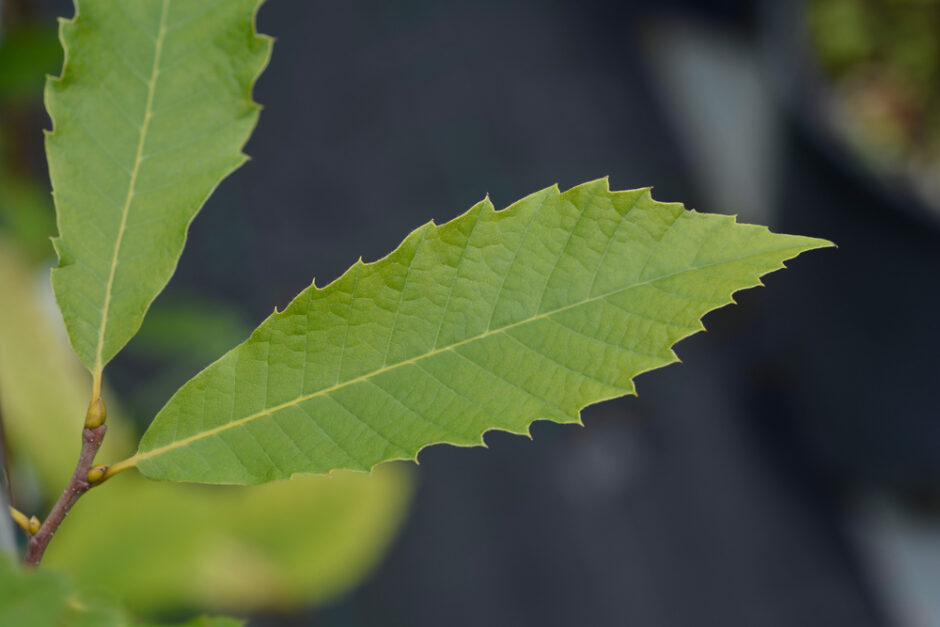
With long slender serrated leaves which appear before the flowers.
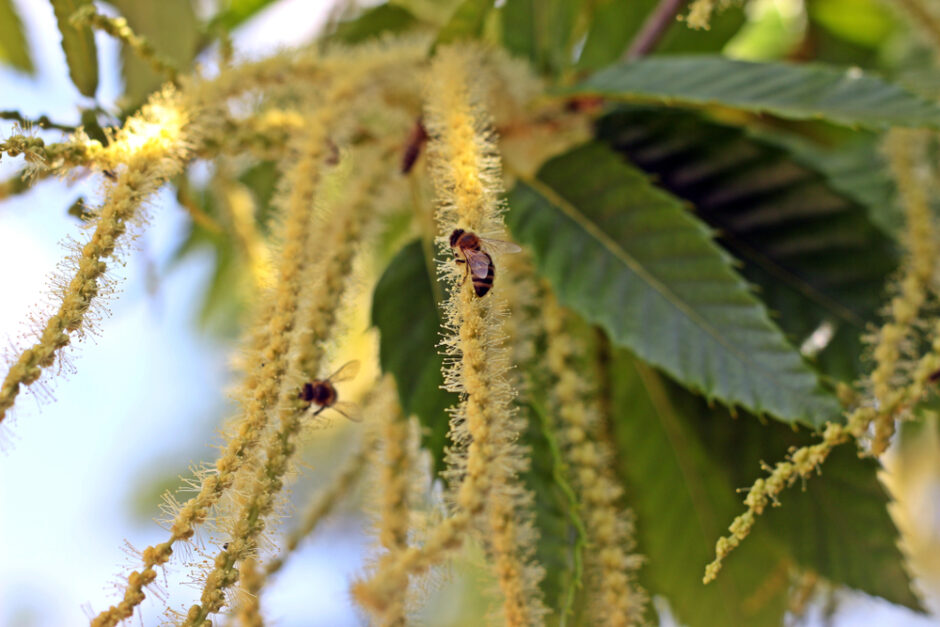
Individual Flower Clusters
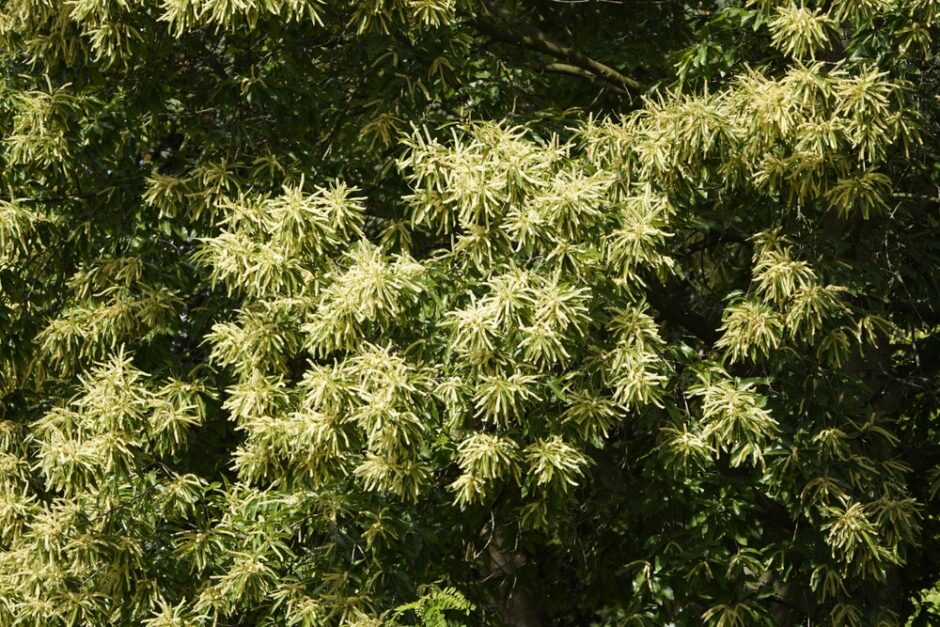
General appearance when the tree is in flower
Making quite a show when they flower, the Sweet Chestnut produces large clusters of narrow yellow flower spikes. Very obvious when you see it.
However you will smell it if you approach it before seeing it, as the flowers have a scent not unlike that of scouring powder.
These then result in these clusters of seed cases.
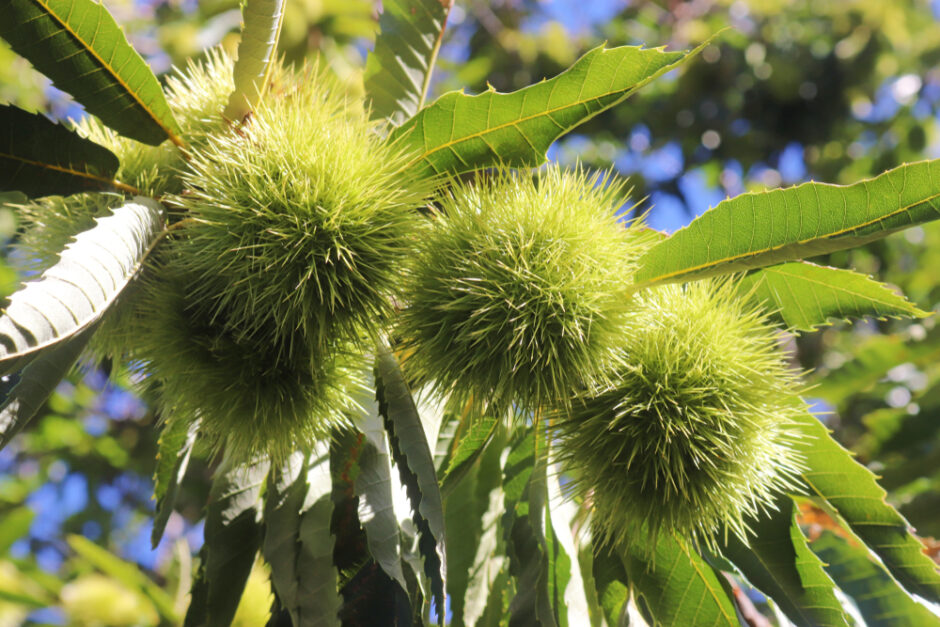
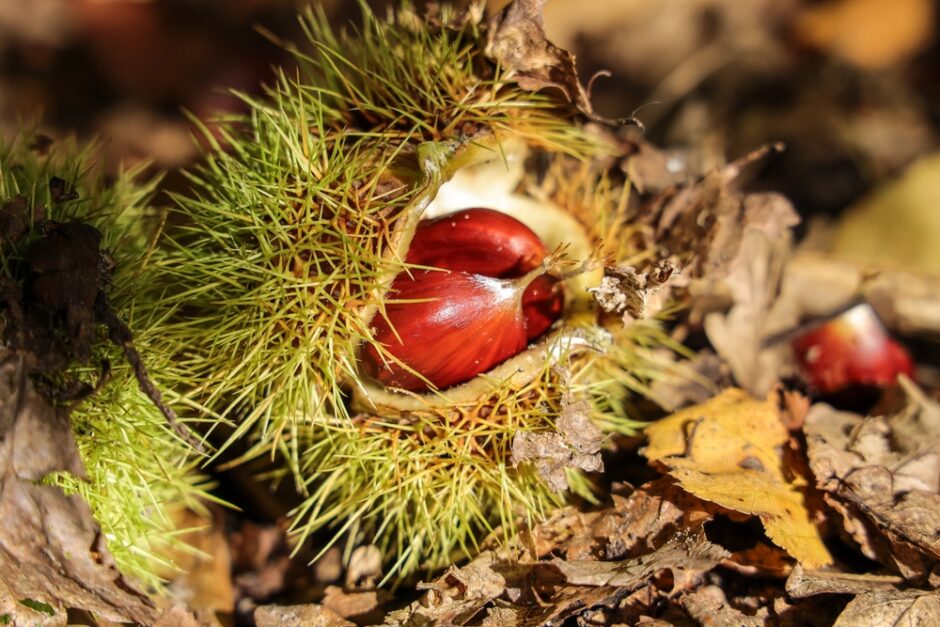
Sweet Chestnuts
The resulting seed is contained within a protective case that is covered in numerous thin, sharp spines until the seed is mature. At which point the casing splits open to reveal the sweet chestnuts – mostly more than one in a seed case.
And as Autumn approaches, the green leaves fade to yellows and browns and are then discarded by the tree for the winter.
